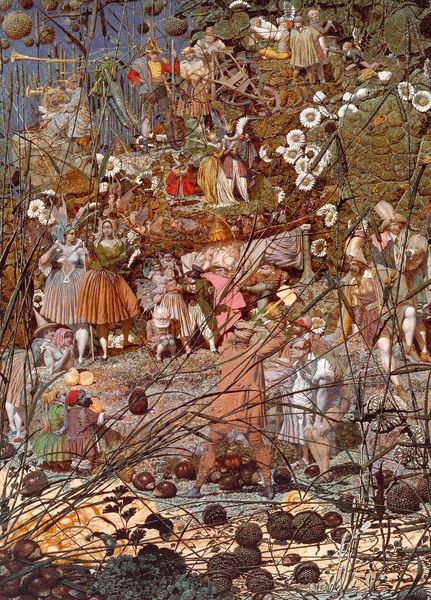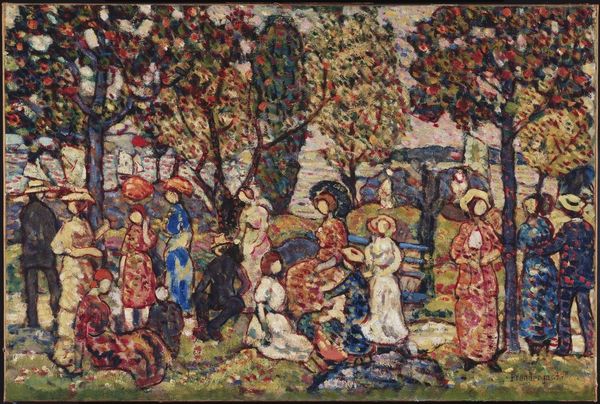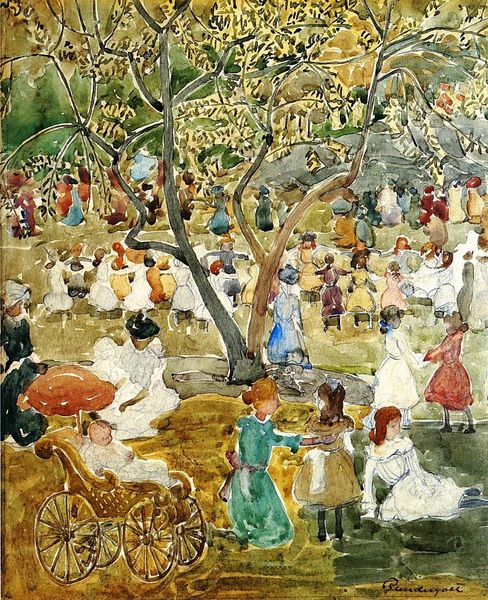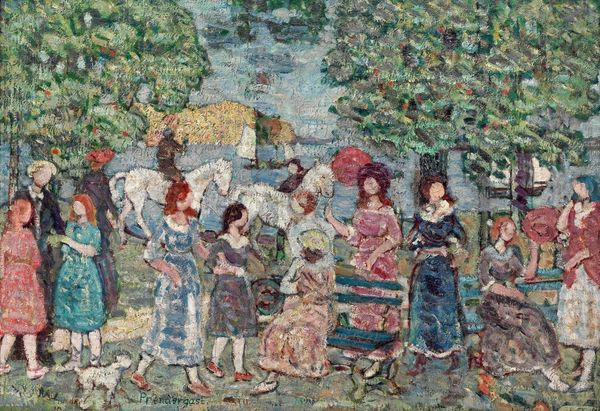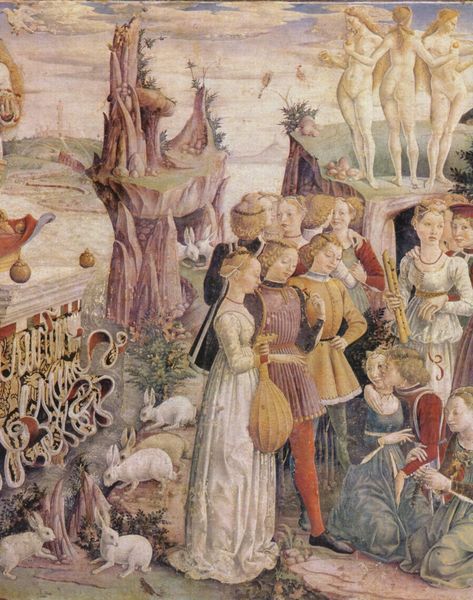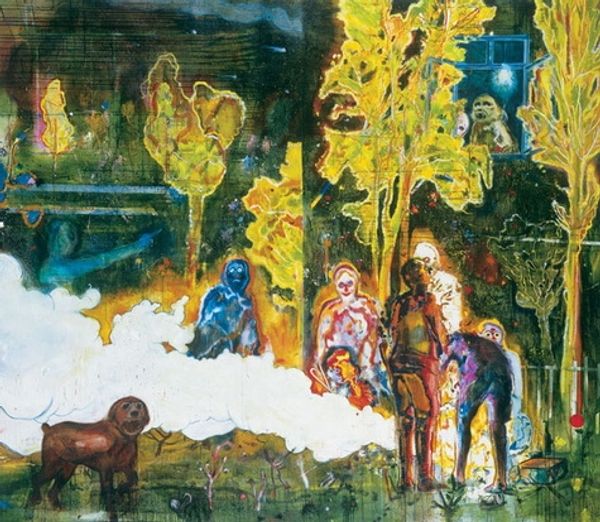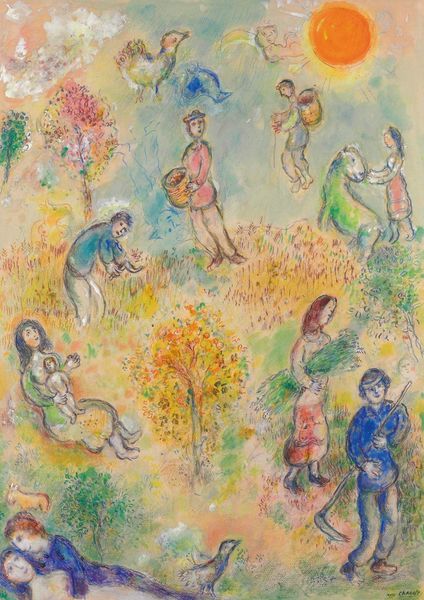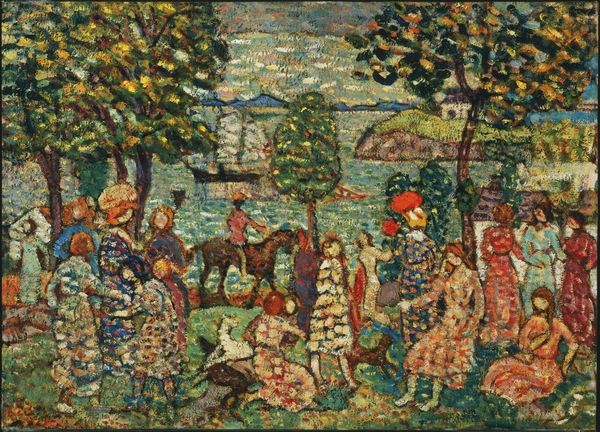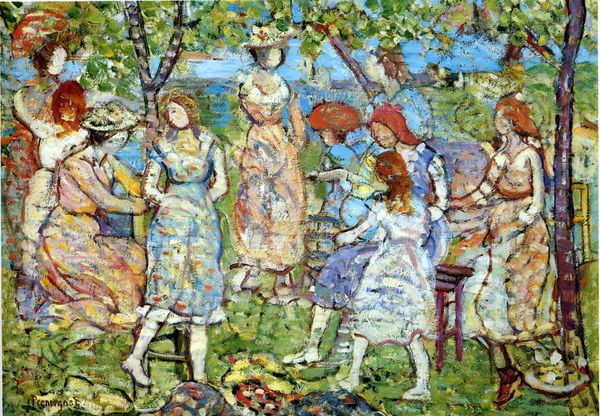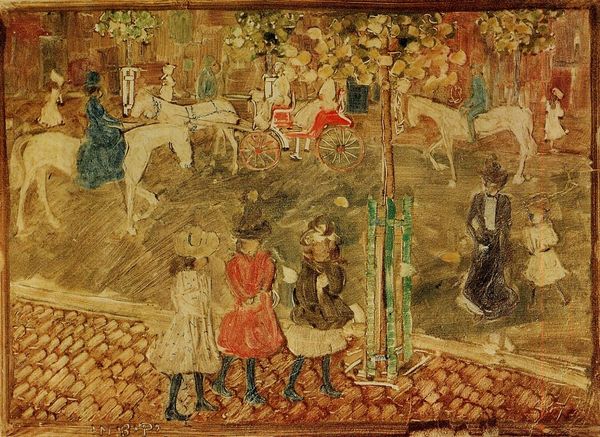
Dimensions: 82.87 x 108.27 cm
Copyright: Public domain
Editor: This is Maurice Prendergast's "Landscape with Figures," painted in 1921, using oil on canvas. It feels so impressionistic, with the dappled sunlight and visible brushstrokes. It looks like a group of women enjoying a leisurely day, maybe a picnic? How do you interpret this work? Curator: I see this piece as a reflection of early 20th-century leisure and the changing social roles of women. Prendergast frequently depicted scenes of recreation, often featuring women in public spaces. He gives us insight into how these new found freedoms played out visually, specifically within social hierarchies. The figures blend with nature blurring the lines of privilege that often shaped how women interacted in outdoor spaces. Notice how he portrays them—not necessarily individualized, but as part of the landscape itself, contributing to a tapestry of societal norms undergoing significant changes post WWI. Do you think that the idyllic nature is a reflection of reality, or is it possibly a commentary? Editor: That's interesting! I hadn't considered it as a social commentary. Maybe it’s a bit idealized, presenting a curated version of reality? But that idyllic setting, that escapism in art - was it accessible for everyone, or primarily the domain of a privileged class? Curator: Precisely! Prendergast was painting for an audience largely composed of those who could afford such luxuries and representations. Think of it in terms of power and perspective; Who gets to be seen having fun in art and what do we expect their experience to be? By recognizing that disconnect, we can critically examine how artists frame everyday life and whose narratives take center stage within museum walls. Editor: This helps me think about art's relationship to society on a much deeper level. I thought the painting was just beautiful, but now I understand that it’s a representation of complex ideas of freedom and access in the 20th Century. Curator: Exactly! Seeing art as both beautiful and political expands our understanding. There is often much more to it than just a surface interpretation.
Comments
No comments
Be the first to comment and join the conversation on the ultimate creative platform.
